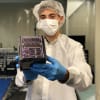This project is now in update mode. Check back regularly to see how things are progressing.
Let's build this spacecraft together!
Alpha: Our Story
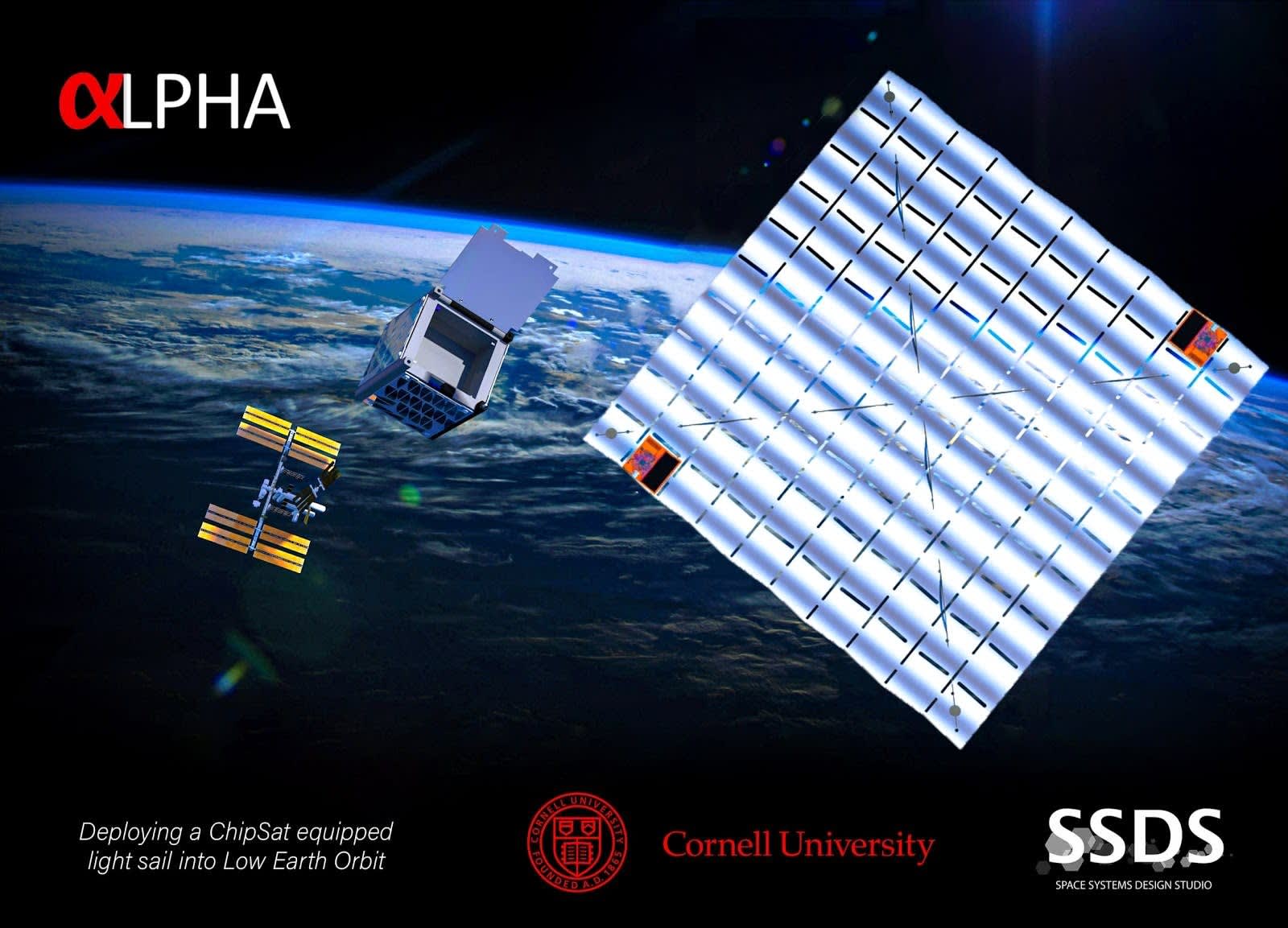
Alpha Cubesat is a light sail-carrying, cube-shaped satellite—and a stepping stone to our nearest star system. With the first-ever holograms in space, tiny ChipSat computers, and low-cost components, Alpha opens up new techniques for interstellar messages and affordable spacecraft.
Alpha’s story brings together NASA scientists, holographic artists, Silicon Valley inventors (a real-life Iron Man), and, of course, Cornell students. Part science mission and part art exhibition in space, Alpha carries far-reaching implications for interstellar travel and our search for life in the universe.
Our team has been working tirelessly since 2016 to create science fact from science fiction. Now with more team members than ever—over 40!—Alpha is closing in on a 2024 launch date.
Alpha has been approved by NASA and is guaranteed to fly. Your donation helps launch a spacecraft six years in the making!
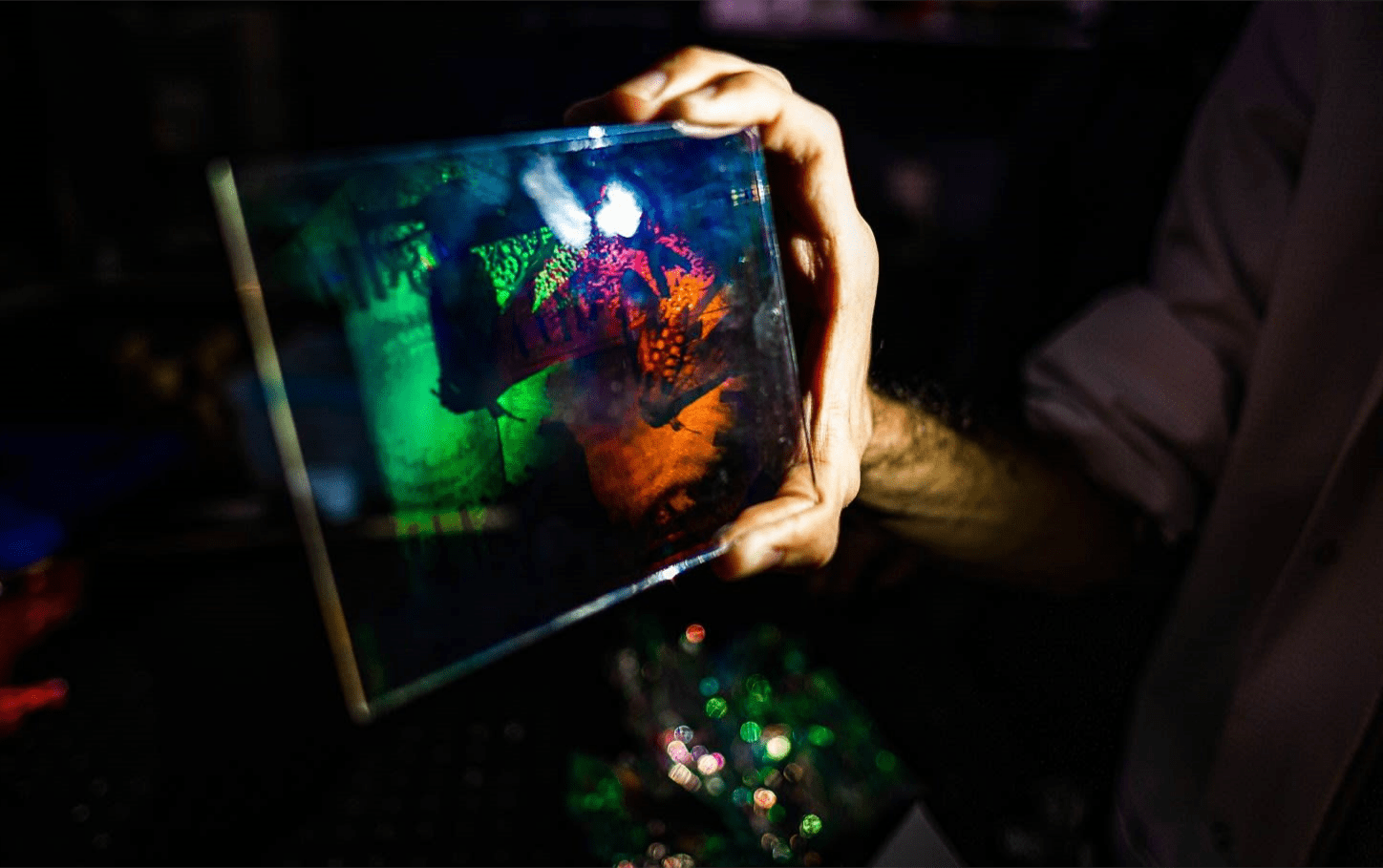 Our holograms, embodiments of life on Earth, will be the first-ever launched into space, embossed on Alpha's solar panels
Our holograms, embodiments of life on Earth, will be the first-ever launched into space, embossed on Alpha's solar panels
Why Alpha?
Our mission is pioneering multiple techniques that may fundamentally change deep space exploration. Innovations include a primarily 3D-printed spacecraft structure, the use of a RockBlock modem for decentralized communication, the placement of holograms on the spacecraft, and the release of a light sail that flies completely separately from its host satellite.
3D printing provides us with the versatility of rapid design and prototyping, while the usage of RockBlock Mk II, a modem that communicates with nearby Iridium satellites, enables us to send commands and receive data via website, rather than use a traditional ground station setup.
Holograms are capable of storing vast amounts of information and could play a key role in stabilizing future light sails on their way to Alpha Centauri, our nearest star system.
Alpha actively works to simplify and lower the costs of future scientific missions in Earth’s orbit and deep space.
With software development nearly complete, all that’s left is the final stages of CubeSat assembly, finalizing our ChipSat design, and thoroughly testing our spacecraft.
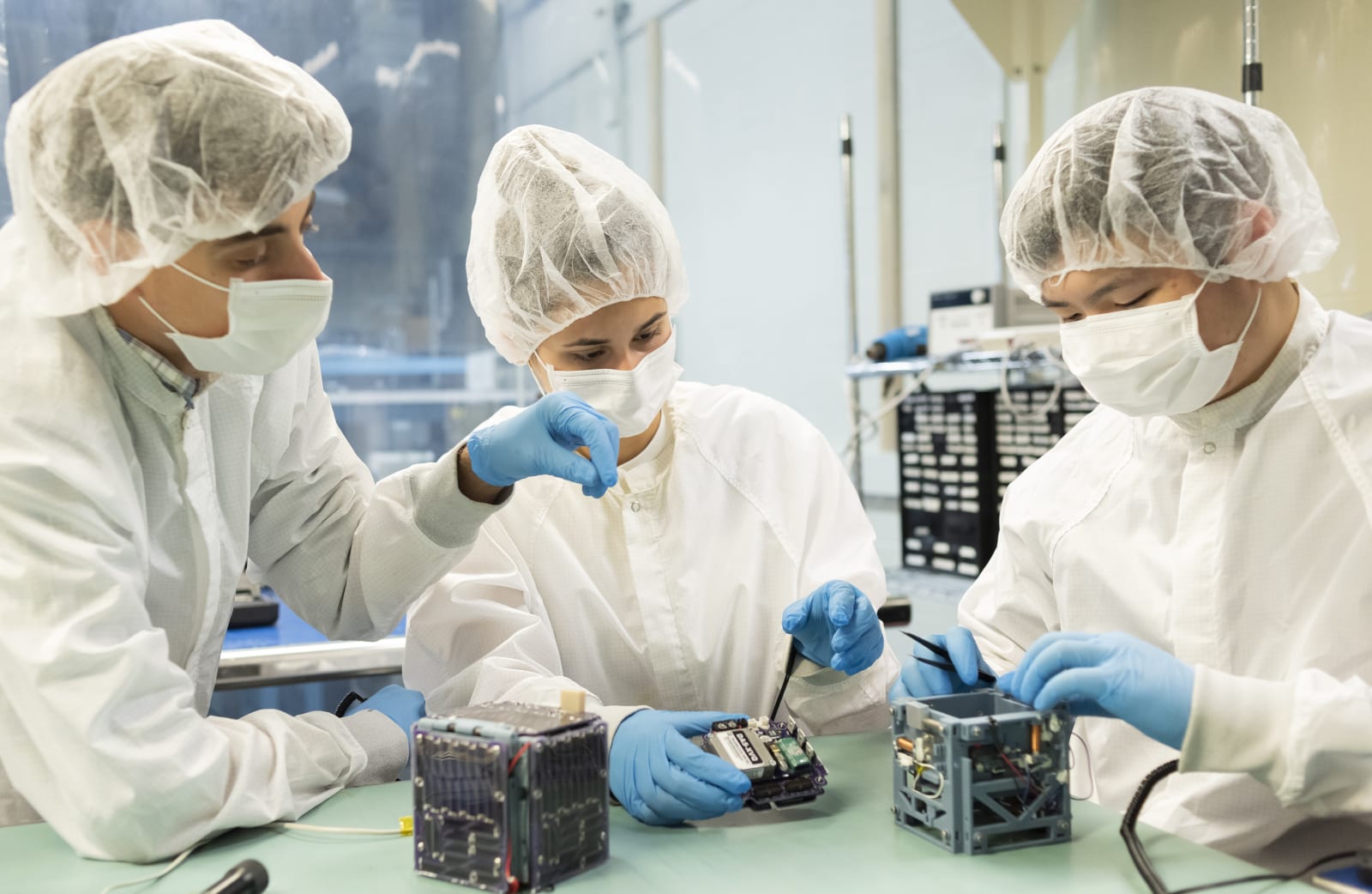 Project lead Josh Umansky-Castro, Alpha Member Allie Voltaggio, and Alpha alumni Andy Tan hard at work integrating electronics. In this image, the CubeSat on the right still needs some work, but as of 2023 we're much closer to finishing assembly!
Project lead Josh Umansky-Castro, Alpha Member Allie Voltaggio, and Alpha alumni Andy Tan hard at work integrating electronics. In this image, the CubeSat on the right still needs some work, but as of 2023 we're much closer to finishing assembly!
Impact
Alpha Cubesat is largely undergraduate-led, and the first engineering experience many of our 40 members get to have. For all of us, Alpha is the first spacecraft we’ve ever had the chance to build.
But contributing to Alpha CubeSat does more than launch a spacecraft—it’s also launched the careers of nearly 50 alumni. Students have secured internships and jobs in the space industry with the experience they developed on Alpha.
Donating to Alpha helps fund these futures, as well as a future for all of us—where humans set sail to the stars.
Let’s Get Technical!
Alpha is a 1U CubeSat capable of deploying a free-flying 0.57x0.57m light sail in response to commands via the RockBlock Mk II and the Iridium satellite network.
The sail has a palm-sized ChipSat computer attached to each of the 4 corners. These will transmit GPS data to Cornell University’s ground station, enabling tracking of the sail to an accuracy of about 10m.
The concept of a solar sail has already been successfully utilized in missions such as JAXA’s IKAROS (polyimide) and the Planetary Society’s LightSail 2 (Mylar), but this will be the first time that a retroreflective sail is employed. Retroreflection—an effect seen in the “glowing” eyes of cats and signs shining against headlights—is an efficient form of reflection where light bounces back to its source rather than scattering. This provides a bigger force on the light sail, allowing it to move faster than it would otherwise.
We are also the first spacecraft mission to incorporate the use of holograms, created from sculptures made by artist C. Bangs. These will be placed above five of the CubeSat’s solar panels.
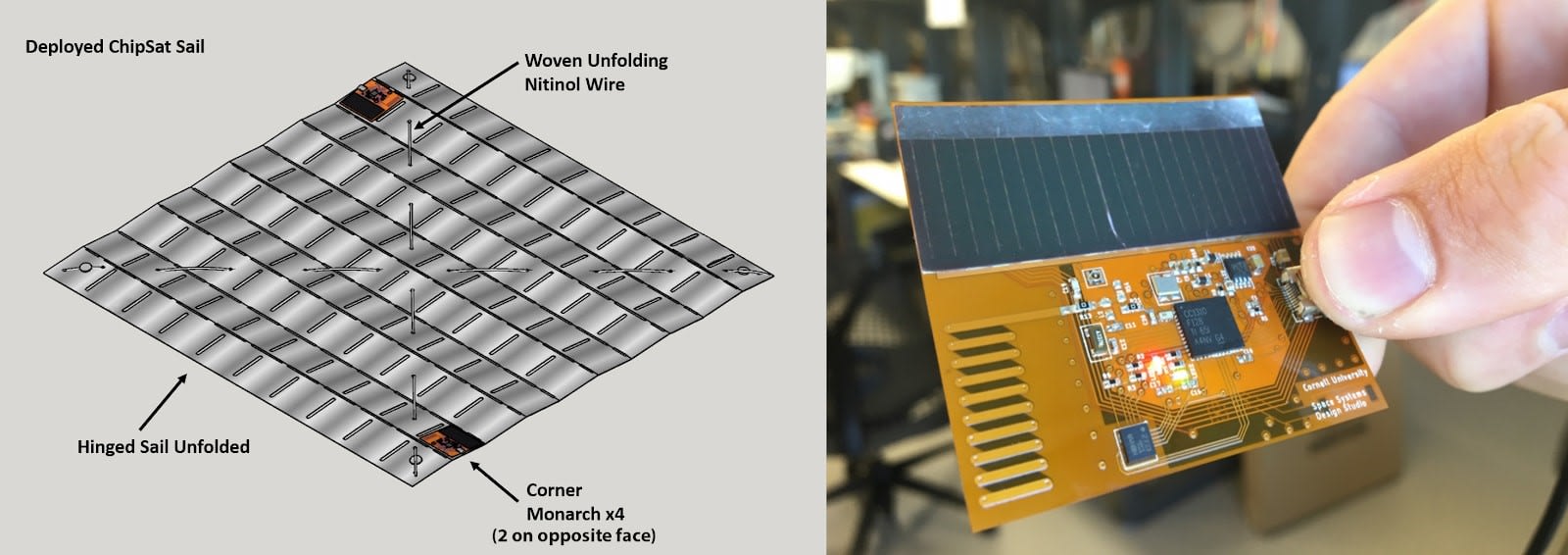 The payload: a polycarbonate light sail with four Monarchs (next-generation ChipSats) for tracking and orientation.
The payload: a polycarbonate light sail with four Monarchs (next-generation ChipSats) for tracking and orientation. Alpha will be launched onboard a commercial resupply cargo mission to the International Space Station (ISS), from Cape Canaveral, Florida in 2024. It will be released into orbit from the ISS via the NanoRacks CubeSat Deployer (NRCSD). Apogee and perigee will be approximately 400km, on an inclination of 51.6° from the equator.
 Weather balloon launch, October 2021—successful test of RockBlock modem to deploy light sail
Weather balloon launch, October 2021—successful test of RockBlock modem to deploy light sail Ground communication via the Iridium network will begin two to three hours after deployment of the CubeSat from the ISS. Payload deployment will occur on command around twenty-four hours after the CubeSat is deployed; with the sail’s orbital lifespan on the order of a few days. Atmospheric drag will lower the CubeSat’s altitude until it de-orbits about three months after release from the deployer, having successfully completed its mission.
Announcing our spin-off project: Sailing to the Stars!
As Alpha reaches it's final stages, we are also excited to announce the commencement of our sister project, Sailing to the Stars! Another step towards our ultimate goal of sending ChipSat-sails to the moon, Mars, and beyond, Sailing to the Stars seeks to demonstrate light sail deployments inside the International Space Station! Taking advantage of the unique microgravity environment of the station and ability to downlink high resolution video footage (with the help of the astronauts executing our experiment!), we will collect great data on the sail and deployer dynamics to inform designs on future Cubesat missions. Any funds leftover from the Alpha mission will help this new project get off the ground!

We sincerely appreciate any contributions you can make to bring our project to fruition!
Your support takes humanity one step closer to the stars.
$15
ChipSat Radio Module
Your donation will provide radio-equipped microcontroller for range-testing our ChipSat LoRa communications.
$50
Full ChipSat Prototype
Your donation will cover the cost of an entire ChipSat prototype! This includes the PCB, stencil, solder paste, and electronic components to populate the circuit board.
$75
ChipSat Radio Balloon Launch
Your donation will allow us to test our ChipSat radios (and in the future full ChipSats!) via a high-altitude balloon launch. These long-range tests are critical to verifying that our little satellites will be heard from space!
$100
Alpha Mission Ground Station
Your donation will allow us to track our light sail when it’s in orbit! With an antenna, LNA, LoRa transceiver, and a whole lot of weather-proofing, our small rooftop setup will be able to hear our ChipSat from hundreds of kilometers away!
$150
CubeSat Thermal-Vacuum Test
Your donation cools our spacecraft to subzero temperatures as we test our completed CubeSat to the extremes prior to launch! We only get on shot in space, so it’s important to test as we fly.
$500
High-Altitude Light Sail Test
Your donation will deploy our light sail at the edge of space! Through a high-altitude balloon launch, we plan to capture HD footage of our light sail deployment in the space environment. It will be an important verification of our deployment mechanism, spacecraft electronics, and flight software, and of course will deliver spectacular visuals to publicize the Alpha mission!
$750
Space-Rated ChipSat GPS Module
The most expensive part of the ChipSat. Your donation enables us to track our light sail in space!
$1,000
Full Flight-Ready ChipSat
Your donation will cover one of the 5 ChipSats designed to operate in space! (Four that will actually fly, and one spare just in case). The reason these are significantly more expensive than the prototypes are due to space-rated GPS modules (which cost $850 as opposed to the $15 earth-based ones), and the very efficient (and rare!) flexible GaAs solar cell that provides power to the board. We will only manufacture these flight units ones we fully prove the ChipSat design through the fabrication and test of the affordable prototypes, so we promise your donation will go to good use!


